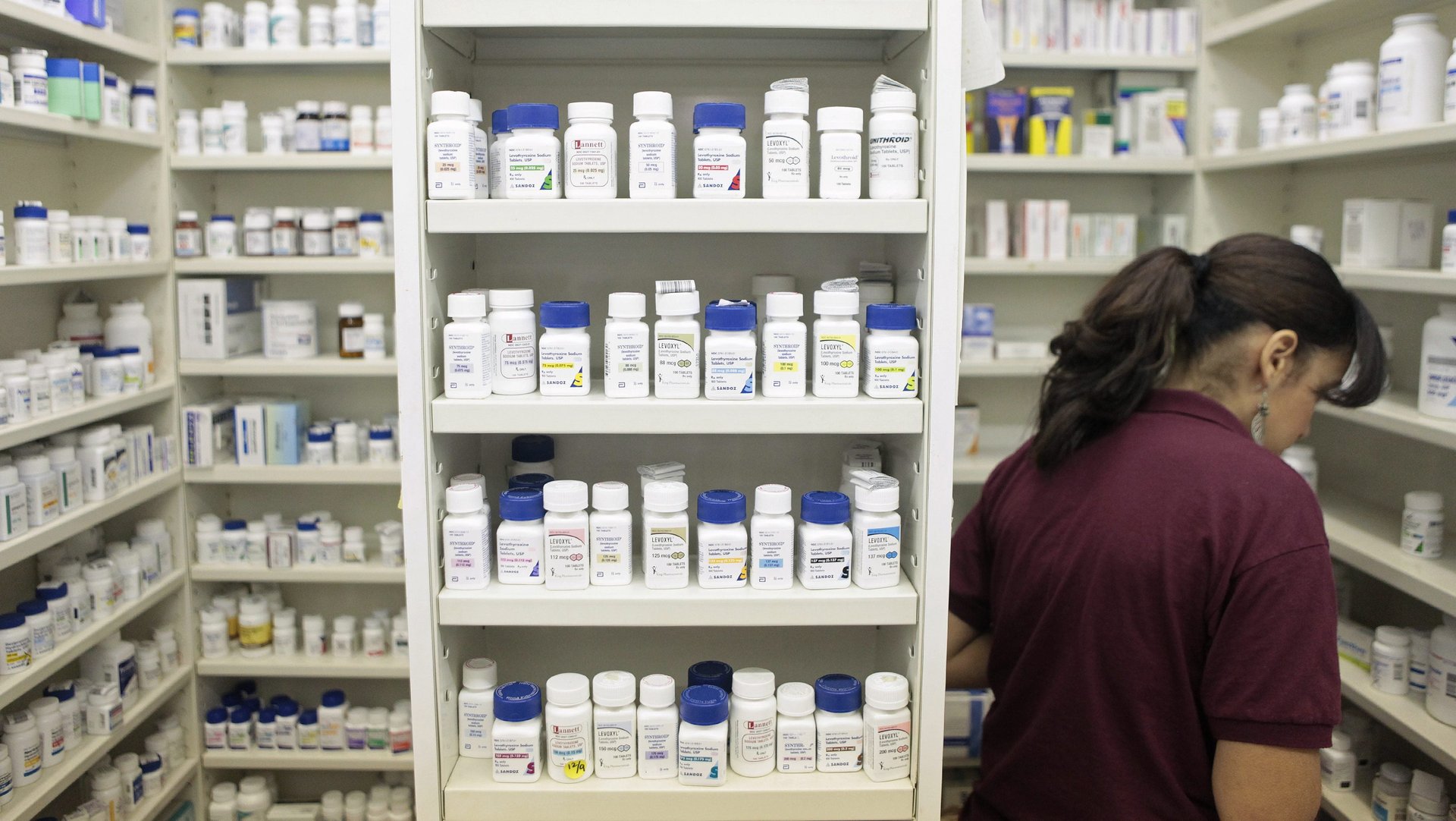If Trump wants to bring down US drug prices, he’ll borrow this tactic from the UK
While attempts at repealing Obamacare appear dead (at least for the foreseeable future), US president Donald Trump still has an opportunity to tackle the soaring costs of American-style healthcare by addressing one of its biggest problems—the high cost of prescription drugs.


While attempts at repealing Obamacare appear dead (at least for the foreseeable future), US president Donald Trump still has an opportunity to tackle the soaring costs of American-style healthcare by addressing one of its biggest problems—the high cost of prescription drugs.
The US spent $3.2 trillion on healthcare in 2015—almost a fifth of its total GDP—and 10% was on prescription drugs. That comes to more than $1,000 per person, per year. Drug prices have climbed at about 10% annually, and will continue to climb as more sophisticated treatments for cancer and heart disease are introduced. One cutting-edge treatments for melanoma, for example, now costs $256,000 a year (paywall).
Trump has loudly and often proclaimed his outrage over this. He convened the CEOs of the largest pharmaceutical companies in January, and more recently, said he wants the Medicare, the federal insurance program for seniors, to negotiate the cost of drugs, which is now forbidden by law. Drug stocks quake when he raises the subject, but they recover because no plan has been proposed.
If Trump truly wants to bend the arc of rising drug prices, he might want to look at how it’s done in the UK.
In England, the National Health Service, the government agency which provides mostly free healthcare to 65 million people, spends about $391 per person (pdf)—around two-fifths of per-capita US spending. Prescription drugs there cost three times less than in the US. Putting aside the issue of whether it’s cheaper for the US to simply adopt universal healthcare, one way the NHS does this is by negotiating down the cost of of some drugs, and simply refusing to buy others.
Once drugs are deemed safe and effective, they’re subject to a cost-benefit analysis by the UK’s National Institute of Cost Effectiveness (NICE). NICE determines whether the drugs are actually worth the money, and whether they should be bought by the NHS. Since the government buys the overwhelming majority of drugs in the UK, NICE’s recommendations—and the fear of a rejection—are hugely influential.
It’s not an empty threat: The agency turns down about a fifth of the drugs and treatments it evaluates.
When analyzing drugs, the agency considers the cost of extending a patient’s life for a year, adjusted for the quality of that additional year, and compares it to the next best alternative. Generally, NICE won’t approve drugs that cost more than £20-30,000 ($25-38,000) per quality-adjusted “life year” than the next best alternative. The US has a far higher appetite for cost: according to one analysis, the average difference for renal dialysis, for example, and the next best option to treat kidney failure is $129,000.
A NICE rejection can also serve to open negotiations.
For example, in 2015, the agency said the almost $5,000 per month cost of Lynparza, a new drug for certain types of ovarian cancer, would cost as much as £66,500 for the benefit it provided compared to existing treatments. After discussions, Lynparza’s manufacturer, AstraZeneca, agreed to both lower the price by an undisclosed amount, and pay for the cost of the drug if a patient remains on it after 15 months.
In the US, the Food and Drug Administration has the mandate of ensuring drugs are first safe, then effective, but is silent about whether the drugs it approves are worth the money. Medicare and Medicaid, the biggest buyers of drugs in the US, can’t ask, either. Pharmacy-benefit managers, like Express Scripts and CVS, which administer prescription plans for private insurers, can refuse to add drugs to their lists of approved medications, but are subject to the pressures of both pharma companies and customers.
Things may be starting to change, though. US insurance companies are beginning to discuss value-based pricing for drugs, and an association of cancer doctors now recommends oncologists weigh a drug’s cost when prescribing. But until Medicare and Medicaid start demanding that drugs be priced according to their effectiveness, US drug prices are likely to continue climbing.